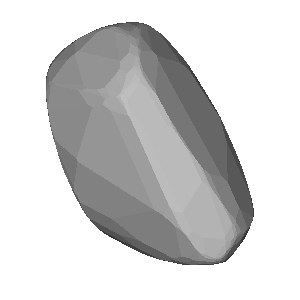2020-03-23 / 4UC 566-012493 / (486) Cremona
| # | OBS | Observer | Occ | Meth. | Instr. | CC | TSRC | UT1 | UT2 | UT3 | UT4 | UT2E | UT3E | Dur. | Chrd |
|---|---|---|---|---|---|---|---|---|---|---|---|---|---|---|---|
| 1 | show | Michal Rottenborn | O+ | VID | M303 | CZ | GPS++ | 19:42:28 | 19:44:30.89 | 19:44:31.65 | 19:46:28 | 0.06 | 0.06 | 0.76 | 18.5 |
| 2 | show | Olivier Schreurs | O+ | VID | M280 | BE | GPS++ | 19:43:07 | 19:44:14.18 | 19:44:14.74 | 19:45:17 | 0.02 | 0.02 | 0.56 | 13.7 |
| 3 | show | Petr Zeleny | O- | CCD | M254 | CZ | 19:42:30 | 19:46:45 | |||||||
| 4 | show | Jiri Kubanek | O- | VID | M203 | CZ | 19:42:27 | 19:46:31 | |||||||
| 5 | show | Miroslav Polacek | O- | CCD | M152 | CZ | 19:43:06 | 19:47:05 | |||||||
| 6 | show | Karel Halir | O- | VID | M507 | CZ | 19:42:29 | 19:46:29 | |||||||
| 7 | show | Roland Boninsegna | O- | VID | M400 | BE | 19:42:23 | 19:45:20 | |||||||
| 8 | show | Peter Birtwhistle | O- | CCD | M405 | UK | 19:43:47 | 19:44:07 | |||||||
| 9 | show | Philip Denyer | O- | VID | M235 | UK | 19:42:02 | 19:45:58 | |||||||
| 10 | show | John Talbot | O- | VID | M303 | UK | 19:41:55 | 19:45:55 |
10 observations found in db: euraster
Available (probably) matching predictions (click on the link to switch):| JPL#56 : d75da6af-5e50-4faa-839d-048874a36916 [db: observed] |
Using prediction d75da6af-5e50-4faa-839d-048874a36916 for map and profile fit
| Ellipse and circular profile fits to the timings (chords) |
|---|
|
|
Auto-Fit Result: X0,Y0 = 649.9, -2.5 km Circular diameter = 40 km From 2 chords (VID) You can enter space separated chord numbers (example: 11 4 8) or a method like VIS to ignore all visual timings, or a time source like RAD and NTP (but not GPS). If the plot disappears, then there are less than 2 chords left (too much ignored, go back with browser). Check SiMDA for size and mass data. Check Johnston Archive for satellites. |
Sky projection (artificial light) for occ. time: 2020-03-23, 19:44 UT (JD = 2458932.322)
| DAMIT | Q | P (h) | λ, β | JD0 | JD-JD0 | φ0 | Version | Modified | Vol-equiv D | Cmnt |
|---|---|---|---|---|---|---|---|---|---|---|
| # 359 | None | 65.151 | 227°, 59° | 2.448721e6 | 10211.3 | 0.0° | None | 2011-05-02 | not scaled | 2011-04-21 |
| # 360 | None | 65.151 | 31°, 30° | 2.448721e6 | 10211.3 | 0.0° | None | 2011-05-02 | not scaled | 2011-04-21 |


Image size: 300px. Transparent image background for copy & paste
| Map with groundtrack and observer stations |
|---|
| Event Details |
|---|
Occultation UUID [and DB] : d75da6af-5e50-4faa-839d-048874a36916 [observed] Occultation Date + Time : 2020-03-23 at 19:41:36 UT +/- 0.0 min [1] Object Designation : (486) Cremona Orbit Class : MBA Star Designation : GDR3 3413339638324279168 Star Coordinates (ICRF) : RA = 04 55 09.6617, DE = +23 11 37.071 [2] Star Magnitudes : G = 11.07 mag, RP = 10.07 mag, BP = 12.12 mag Object Magnitude : V = 16.32 mag Estimated Magnitude Drop : 5.3 mag Estimated Max. Duration : 0.9 sec Object Mean Diameter : 22 km (src: astorb) Speed of the shadow : 24.4 km/s Elongation to Moon & Sun : 78° (sunlit = 0%), Sun = 71° Cross-track uncertainty : 0.7 mas = 1 km = 0.06 path-width (1-sig) RUWE and duplicate source : 1.24 mas, dup.src = 0 (0:false, 1:true) Ephemeris Reference : JPL#56 [1] time t0 of closest geocentric approach c/a, [2] including proper motion until t0 |
| More Data and Informations |
|---|
(If error 404: link not valid which means no data available)
| Aladin Sky Atlas |
|---|
| Aladin Lite direct link (has Gaia overlay) |